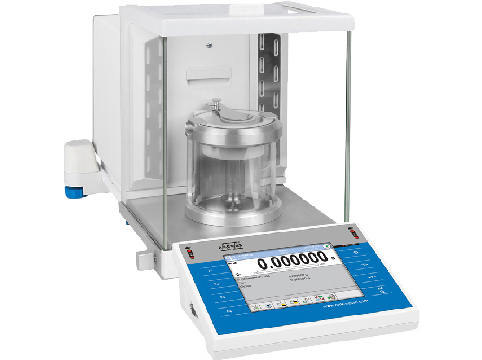A Laboratory microbalance can make accurate measurements of the weight of very small objects, with a resolution in the order of a millionth of a gram.The instrument is considered to be the highest precision. It is used in industry and research.
Browse a full range of Microbalances products

What is Microbalance
A microbalance is a very accurate weighing instrument. It gives unmatched repeatability values (from 0.15 μg). Its readability is impressively high (from 1 )g), and the maximum capacity - very small (to ca. 50 g).
A microbalance is an instrument designed to measure the mass of objects that are small in size or weight. These instruments are typically used in research laboratories, where accuracy and precision are essential. Microbalances measure mass in units such as milligrams (mg), micrograms (µg), and nanograms (ng). You can also use them to measure very small changes in mass over time. They can be used to measure small samples of biological material, such as cells or proteins, or to measure the mass of very tiny particles.
Microbalances offer a maximum capacity of 10.1 g with readability down to 1 µg (0.000001g). With incredibly high accuracy and precision, microbalances can measure even the tiniest particles with great accuracy. With an Ultra microbalance, you'll have a full resolution of 61 million digits and a capacity of 6.1 g with only 0.1 µg readability (0.0000001g). The Ultra-microbalance can weigh samples that are as light as 30 μg.
Different type of microbalance has different readabilities:
- ●Analytical microbalances have a readability of 0.1 mg (0.0001 g)
- ●Semi-microbalances have a readability of 0.01 mg (0.00001 g)
- ●Microbalances have a readability of 1 µg (0.000001g)
- ●Ultra-microbalances have a readability of 0.1 µg (0.0000001 g)
A microbalance is used in almost every industry, from medical and consumer goods to food production and chemicals. They are also used in the pharmaceutical, petrochemical, and cosmetics industries because they offer accuracy to the highest degree of precision. Microbalances play a vital role in essential laboratory research, especially when measuring very small samples with great accuracy. Here are some uses of microbalance:
1. Microbalance and Ultra-microbalance can be used for particulate matter weighing
2. Analysis of pesticides, pipette calibration, and stent weighing can be done with a microbalance.
3. Ashing and incineration, drying, measurement of coatings, and checking spillage quantities can be done with ultra-microbalance
Calibration is an essential part of using any type of microbalance. The calibration procedure helps to ensure that the balance is functioning properly and provides accurate measurements. The calibration process should follow the manufacturer's instructions, as each device may require different calibrations or set-up procedures. A reliable service provider will offer a calibration certificate to show that the microbalance is working as it should.
Application of Laboratory Microbalance
Used mainly for research laboratories such as: pharmaceutical, physical, chemical, biological and medical
Things To Consider Before Use A Microbalance:
Environmental factors and user interaction can greatly interfere with measurement stability and accuracy for microbalances. It is important to maintain a consistent environment while using any type of microbalance. This includes controlling the temperature and humidity of the surrounding air, avoiding vibrations, and following the manufacturer's instructions for proper care and use. You should eliminate any vibration sources for the sake of stability and accuracy. The balance should also be placed on a level surface. In addition, it is important to ensure that the dust cover is in place when not in use. This prevents dust or other particles from settling on the weighing pan and interfering with the accuracy of measurements. You should regularly calibrate your microbalance according to the manufacturer's instructions to ensure proper performance.
. This process allows the temperature and humidity to stabilize for measurements to be as accurate as possible. When putting the sample inside the microbalance, do not slide it into the pan; place it gently instead. Use tweezers to handle any samples if possible. This will reduce static and minimize the risk of contamination. After each use, clean the weighing pan to eliminate residue and prevent cross-contamination.
Wearing gloves is mandatory when working with any type of microbalance. This helps to protect the device from external contamination and prevents residual skin cells or oils from interfering with measurements. \
For proper maintenance of scales, an instruction file for cleaning the instruments attached: "Laboratory balance cleaning"